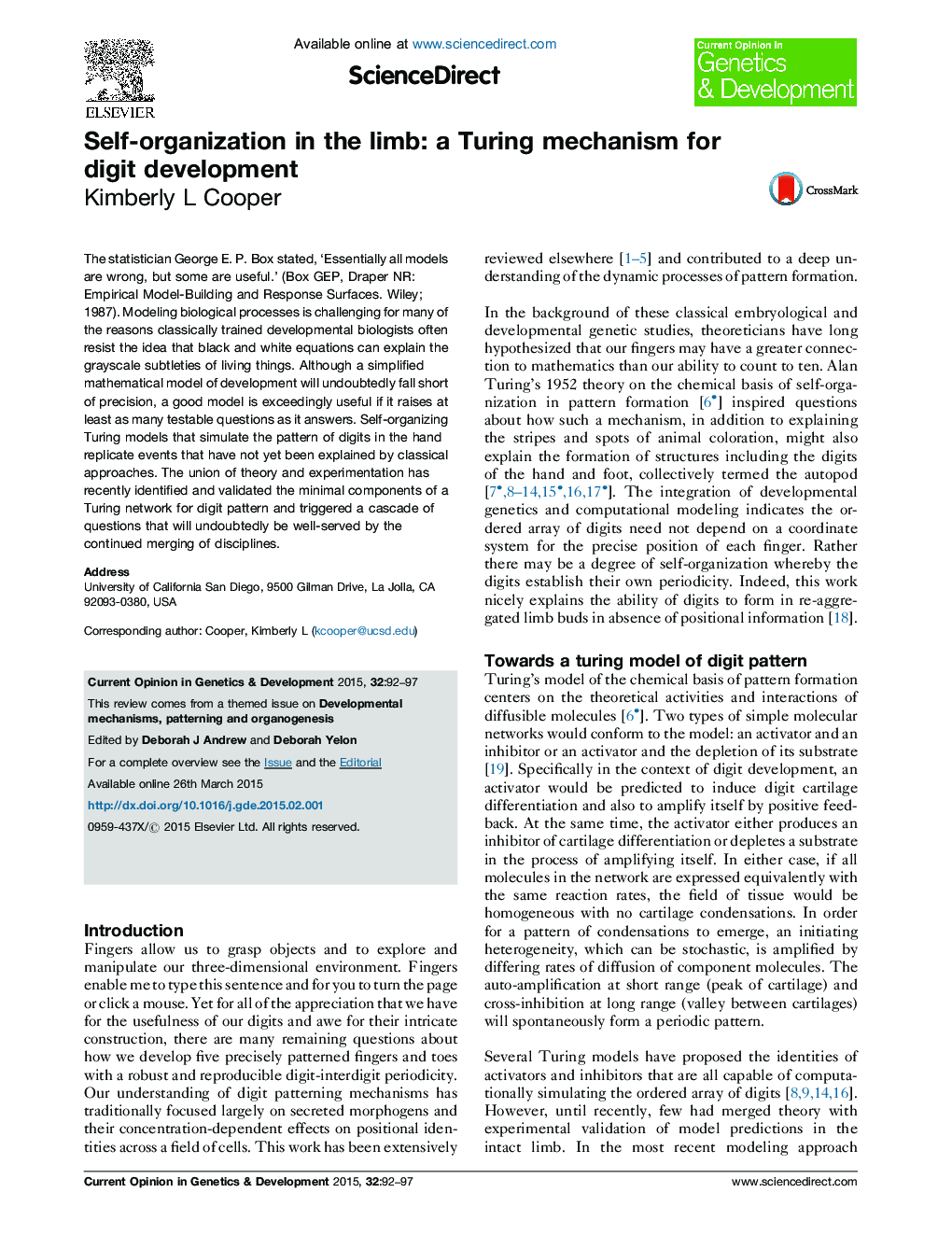| Article ID | Journal | Published Year | Pages | File Type |
|---|---|---|---|---|
| 5893122 | Current Opinion in Genetics & Development | 2015 | 6 Pages |
The statistician George E. P. Box stated, 'Essentially all models are wrong, but some are useful.' (Box GEP, Draper NR: Empirical Model-Building and Response Surfaces. Wiley; 1987). Modeling biological processes is challenging for many of the reasons classically trained developmental biologists often resist the idea that black and white equations can explain the grayscale subtleties of living things. Although a simplified mathematical model of development will undoubtedly fall short of precision, a good model is exceedingly useful if it raises at least as many testable questions as it answers. Self-organizing Turing models that simulate the pattern of digits in the hand replicate events that have not yet been explained by classical approaches. The union of theory and experimentation has recently identified and validated the minimal components of a Turing network for digit pattern and triggered a cascade of questions that will undoubtedly be well-served by the continued merging of disciplines.
